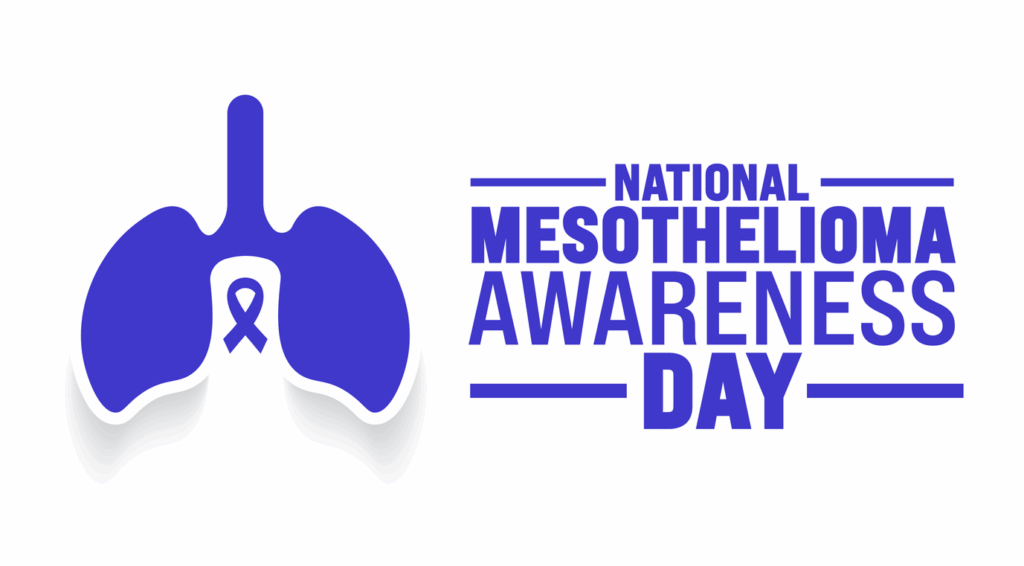
Mesothelioma Awareness Day is a national day of recognition held every year on September 26. It shines a light on the dangers of asbestos exposure and the lives affected by mesothelioma, a rare and aggressive cancer. At DuBose Law Firm, we stand with survivors, families, and advocates working to raise awareness and push for change.
This day is a powerful opportunity to support victims, educate others, and advocate for a future free from asbestos-related disease.
The Origin of Mesothelioma Awareness Day
Mesothelioma Awareness Day began in 2004 through the work of volunteers from the Mesothelioma Applied Research Foundation. Their goal was simple but urgent , to give this devastating disease the attention it deserves.
Their advocacy reached Congress, which officially recognized the day in 2010. Since then, every September 26, patients, caregivers, medical experts, and legal advocates come together to spread awareness, share stories, and support research efforts.
Mesothelioma has long been overlooked, even though its only known cause , asbestos , has been linked to decades of occupational exposure in the United States.
Why Mesothelioma Awareness Still Matters
Even today, asbestos remains a hidden danger. Though heavily regulated, it has not been fully banned in the United States. Thousands of people continue to face exposure risks, especially those working in construction, manufacturing, shipbuilding, and the military.
Raising awareness is not just about remembering the past. It helps protect future generations. It also ensures that victims are not forgotten, their suffering is acknowledged, and their families receive the support they need.
On Mesothelioma Awareness Day, we honor:
- Workers exposed on the job
- Veterans harmed by military asbestos use
- Families affected by secondhand exposure
- Patients fighting for their lives
- Advocates pushing for a cure
If someone you love has been diagnosed with mesothelioma, your voice and support can help make a real difference.
7 Ways to Support Mesothelioma Awareness Day
There are many meaningful ways to get involved this September 26. Whether you’re honoring a loved one, raising awareness, or advocating for change, your actions matter.
1. Wear Blue for Awareness
Blue is the official color of Mesothelioma Awareness Day. Wearing blue helps start conversations and shows your support for the mesothelioma community.
2. Share Stories on Social Media
Use platforms like Facebook, LinkedIn, or X (formerly Twitter) to share survivor stories or educational posts. Use hashtags like #CureMeso and #MesotheliomaAwarenessDay to connect with others.
3. Attend a Local or Virtual Event
Many cities host awareness walks, fundraisers, or memorial services. If you cannot attend in person, look for online events organized by mesothelioma support groups.
4. Donate to Research Organizations
Groups like the Mesothelioma Applied Research Foundation and the Asbestos Disease Awareness Organization fund critical research and support services. Every donation helps move us closer to a cure.
5. Advocate for an Asbestos Ban
Contact your local representatives to support stronger legislation against asbestos. Despite its dangers, asbestos has not been fully banned in the U.S.
6. Educate Your Workplace
If you work in a high-risk industry, talk to your employer about asbestos safety measures. Promoting proper training and compliance can prevent future exposure.
7. Connect with a Mesothelioma Law Firm
Legal action can provide financial relief and hold negligent companies accountable. Firms like DuBose Law Firm fight for victims’ rights and help families secure compensation for medical costs, lost income, and pain and suffering.
A Personal Day of Remembrance and Action
For many, Mesothelioma Awareness Day is deeply personal. It’s a chance to remember loved ones lost to mesothelioma and support those still in the fight.
Each act of awareness , whether large or small , helps break the silence surrounding this preventable disease. Through education, advocacy, and legal support, we can bring hope to families and drive change.
At DuBose Law Firm, we remain committed to standing with mesothelioma victims every day of the year. But on September 26, we ask everyone to pause, reflect, and take action.
Who Is Most at Risk for Mesothelioma?
Mesothelioma almost always results from asbestos exposure. Certain occupations and environments present greater risks, including:
- Shipyard workers
- U.S. Navy veterans
- Insulators and pipefitters
- Construction and demolition crews
- Automotive and brake workers
- Family members exposed to asbestos dust on work clothing
For more details on how exposure occurs, visit our page on occupational asbestos exposure.
How You Can Help Spread the Word
Raising awareness is as simple as talking about mesothelioma. Most people do not know how deadly it is, or how preventable it could have been.
This year, consider:
- Writing to your local newspaper about Mesothelioma Awareness Day
- Sharing your story with a patient advocacy group
- Hosting a blue-themed fundraiser at work or in your community
- Educating your children or students about environmental health hazards
These small actions add up and help protect future generations from the same mistakes of the past.
FAQs About Mesothelioma Awareness Day
What is Mesothelioma Awareness Day?
Mesothelioma Awareness Day is a national observance held on September 26 to raise awareness about mesothelioma and honor those affected by the disease.
Why is it important?
It brings attention to the dangers of asbestos, supports patients and families, and promotes medical research and advocacy efforts.
What is the official color for the day?
Blue is the recognized color for mesothelioma awareness. Many people wear blue to show their support.
Can I get involved even if I don’t know anyone with mesothelioma?
Yes. Public awareness and advocacy are vital regardless of personal connection. Anyone can help prevent future exposure.
How does asbestos cause mesothelioma?
When asbestos fibers are inhaled or swallowed, they can lodge in the lining of the lungs or abdomen. Over time, they cause scarring, inflammation and other changes that occur within the body that may lead to cancer.
Where can I learn more about asbestos risks?
Our asbestos exposure risk factors page covers high-risk jobs, environments, and safety tips.
